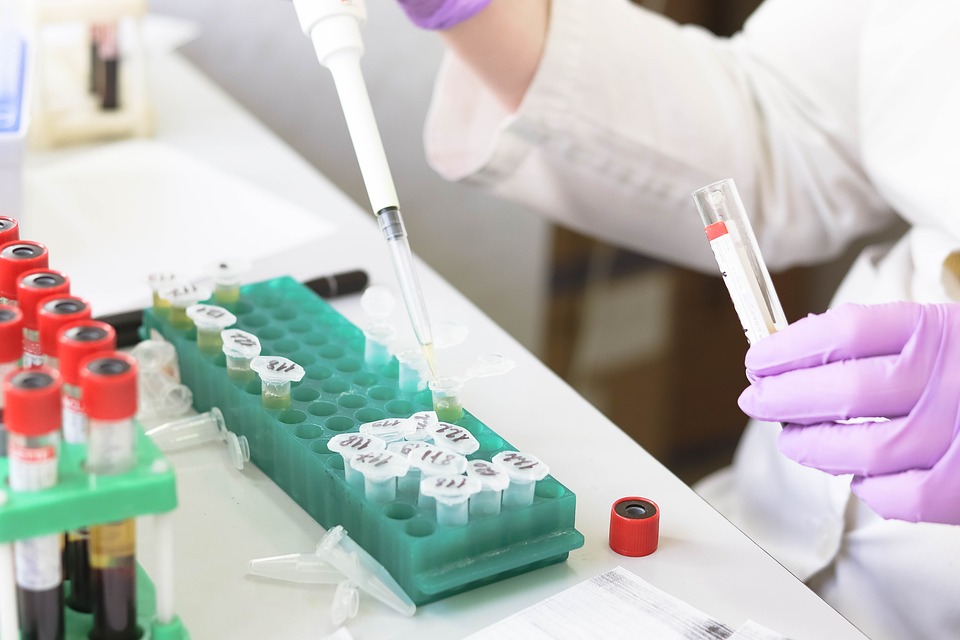What is a D-dimer test?
D-dimer is a breakdown product produced by the normal process of clotting. It is normally present in small quantities in the blood; when increased it is suggestive of increased clotting activity in the body.
How is a D-dimer test performed?
D-dimer is a blood test, performed on the same tube as a coagulation profile or INR Test. It requires the tube to be filled to the correct level. A few millilitres of blood is taken from a vein.
When would you need a D-dimer?
A D-dimer is most commonly requested when the possibility of a deep venous thrombosis (DVT: a blood clot in the leg) or pulmonary embolism (PE: a blood clot in the lung) is being considered.
The test is used as risk-stratifying test, because it may make further testing unecessary in the correctly-selected patient. For example, a patient with a low risk of DVT or PE, with a negative (normal) D-Dimer test, will often not need to undergo further testing such as a Doppler Ultrasound of the legs or a CT Pulmonary Angiogram (CTPA).
The test is less useful at excluding clotting conditions in the body, when the clinical risk is moderate or high. The clinical probability, known as the pre-test probability, is based on a composite impression from the doctor, often incorporating specific items, which may have a points system assigned as a guide.
Get on top of your general health
Find and instantly book affordable GPs within Australia
D-dimer test results explained
D-dimer is one of the products of clot breakdown that can be measured in the bloodstream. Normally, this protein is present in small amounts because there is a constant turnover of tiny clots forming and being broken down by the body’s natural processes.
D-dimer may be NEGATIVE (normal):
Below a set cut-off value, determined by the laboratory and the brand of test, a small quantity of D-dimer in the blood is very reassuring, in the low-risk patient. It suggests that there is not much clot turnover in the body.
If the D-dimer is POSITIVE:
This may be due to non-specific inflammation, bedrest, after injury or surgery, and is more likely with increasing age. The majority of people with a positive d-dimer do not have a DVT or a PE; it simply means that these conditions cannot be excluded to a high degree of certainty.
The real value of a D-dimer test is in the low-risk patient, when the result is negative. Unfortunately it will more often be positive, and further testing will then usually be required to exclude a DVT or PE.
Related specialists
- General Practitioner (GP)
- Emergency Physician
- General Physician
- Respiratory Physician
- Cardiothoracic Surgeon
- Orthopaedic Surgeon
- Cardiologist
- Obstetrician
- Oncologist
Related procedures
- Blood Test (venesection)
Related tests
- Coagulation Profile
- APTT
- INR Test
- Platelet Count
- Chest X-Ray (CXR)
- Electrocardiogram (ECG)
- Legs Doppler Ultrasound Scan
- CT Pulmonary Angiogram (CTPA)
- VQ Scan (Ventilation-Perfusion Scan)
Also known as
- D-Dimers
- Fibrin Degradation Products (FDP)
Links
A: Use HealthEngine to find and book your next Haematologist appointment. Click on the following locations to find a Haematologist clinic in your state or territory.
This article is for informational purposes only and should not be taken as medical advice. If in doubt, HealthEngine recommends consulting with a registered health practitioner.
All content and media on the HealthEngine Blog is created and published online for informational purposes only. It is not intended to be a substitute for professional medical advice and should not be relied on as health or personal advice. Always seek the guidance of your doctor or other qualified health professional with any questions you may have regarding your health or a medical condition. Never disregard the advice of a medical professional, or delay in seeking it because of something you have read on this Website. If you think you may have a medical emergency, call your doctor, go to the nearest hospital emergency department, or call the emergency services immediately.








